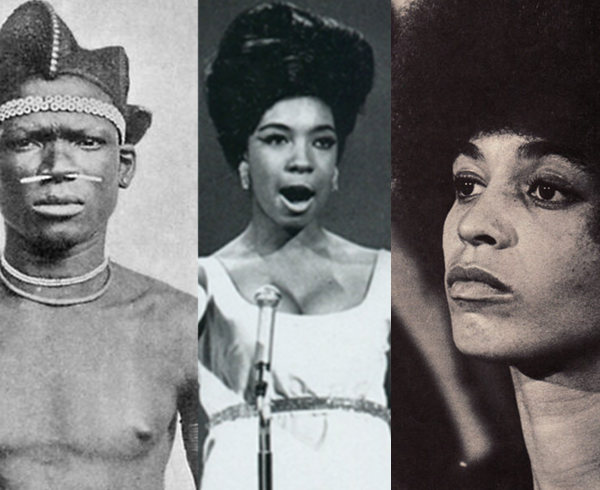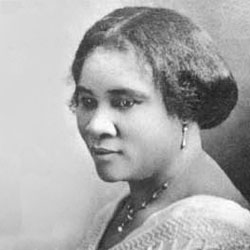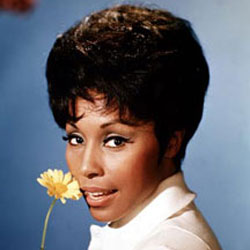[ad_1]

Here is a look back at some of the key events and people who shaped the black hair story.
1444
Europeans trade on the west coast of Africa with people wearing elaborate hairstyles, including locks, plaits and twists.
1619
First slaves brought to Jamestown; African language, culture and grooming tradition begin to disappear.
1700s
Calling black hair “wool,” many whites dehumanize slaves. The more elaborate African hairstyles cannot be retained.
1800s
Without the combs and herbal treatments used in Africa, slaves rely on bacon grease, butter and kerosene as hair conditioners and cleaners. Lighter-skinned, straight-haired slaves command higher prices at auction than darker, more kinky-haired ones. Internalizing color consciousness, blacks promote the idea that blacks with dark skin and kinky hair are less attractive and worth less.
1865
Slavery ends, but whites look upon black women who style their hair like white women as well-adjusted. “Good” hair becomes a prerequisite for entering certain schools, churches, social groups and business networks.

Madame C.J. Walker
1880
Metal hot combs, invented in 1845 by the French, are readily available in the United States. The comb is heated and used to press and temporarily straighten kinky hair.
1900s
Madame C.J. Walker develops a range of hair-care products for black hair. She popularizes the press-and-curl style. Some criticize her for encouraging black women to look white.
1910
Walker is featured in the Guinness Book of Records as the first American female self-made millionaire.
1920s
Marcus Garvey, a black nationalist, urges followers to embrace their natural hair and reclaim an African aesthetic.
1954
George E. Johnson launches the Johnson Products Empire with Ultra Wave Hair Culture, a “permanent” hair straightener for men that can be applied at home. A women’s chemical straightener follows.
1962
Actress Cicely Tyson wears cornrows on the television drama “East Side/West Side.”
1966
Model Pat Evans defies both black and white standards of beauty and shaves her head.
1968
Actress Diahann Carroll is the first black woman to star in a television network series, “Julia.” She is a darker version of the all-American girl with straightened, curled hair.
1970
Angela Davis becomes an icon of Black Power with her large afro.
1971
Melba Tolliver is fired from the ABC affiliate in New York for wearing an afro while covering Tricia Nixon’s wedding.
1977
The Jheri curl explodes on the black hair scene. Billed as a curly perm for blacks, the ultra-moist hairstyle lasts through the 1980s.
1979
Braids and beads cross the color line when Bo Derek appears with cornrows in the movie “10.”

Diahann Carroll
1980
Model-actress Grace Jones sports her trademark flat-top fade.
1988
Spike Lee exposes the good hair/bad hair light-skinned/dark-skinned schism in black American in his movie “School Daze.”
1990: “Sisters love the weave,” “Essence” magazine declares. A variety of natural styles and locks also become more accepted.
1997: Singer Erykah Badu poses on the cover of her debut album “Baduizm” with her head wrapped, ushering in an eclectic brand of Afrocentrism.
1998: Carson Inc., creator of Dark & Lovely and Magic Shave for black men, acquires the black-owned beauty company Johnson Products of Chicago in 1998. L’Oreal purchases Carson two years later and merges it with Soft Sheen.
1999: “People” magazine names lock-topped Grammy award-winning artist Lauryn Hill one of its 50 Most Beautiful People.
2001: Rapper Lil’ Kim wears a platinum blonde weave, while singer Macy Gray sports a new-school afro. Some black women perm, some press, and others go with natural twists, braids and locks.
2003: New Bedford, Mass. Dance teacher Amy Fernandes’ refuses to allow 4-year-old Amari Diaw to participate in her ballet dance recital along with the other children in her class who have been practicing for the exciting event because she requires the girls to pull back their hair into a bun. Amari’s mom put Amari’s very curly hair into cornrows and pulled it back into a bun. Fernandes, however, insisted that the braids be removed and that Amari’s hair be pulled back straight into a bun.
2006: Baltimore Police Department’s new, more rigid professional appearance standards prohibit such hairstyles as cornrows, dreadlocks and twists. These natural hairstyles are deemed to be “extreme” and a “fad” by the department.
2007: MSNBC Radio Host Don Imus loses his job when he calls the Rutgers’ women’s basketball team “some nappy-headed hos.”
2008: “The New Yorker” draws heat when a cover photo portrays Michelle Obama with an Afro and an AK 47 machine gun and and Barack Obama in a turban doing the fist bump. Many felt the cartoon reinforces negative stereotypes about both Muslims and natural hair.
2006: Black hair-care is now a billion-dollar industry.
2009: Comic Chris Rock unveils “Good Hair” at the Sundance Film Festival, exploring the way black hairstyles impact the activities, pocketbooks, sexual relationships, and self-esteem of black people.
2010: The popular children’s show “Sesame Street” airs a skit featuring a song entitled, “I Love My Hair”, showing an African American puppet with natural hair.
2011: Overall, chemical relaxer brands noticed a 67% decline from the previous year in Black women purchasing their products.
2012: News anchor Rhonda Lee is fired for defending natural hair on air.
2013: According to the Nielsen Black Consumer Report, African Americans spend more on hair care than other life necessities, like food and hygiene products.
2014: Today, natural hair care for African American women is one of the biggest growing industries in the world.
[ad_2]
Source link
